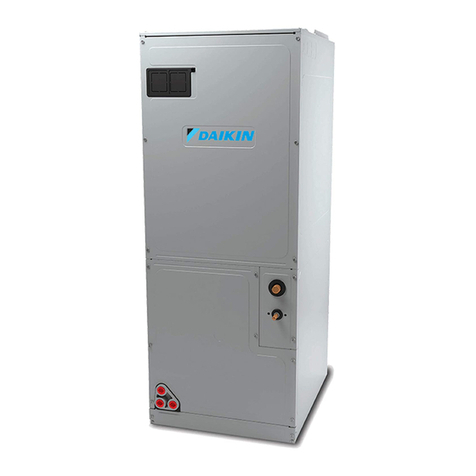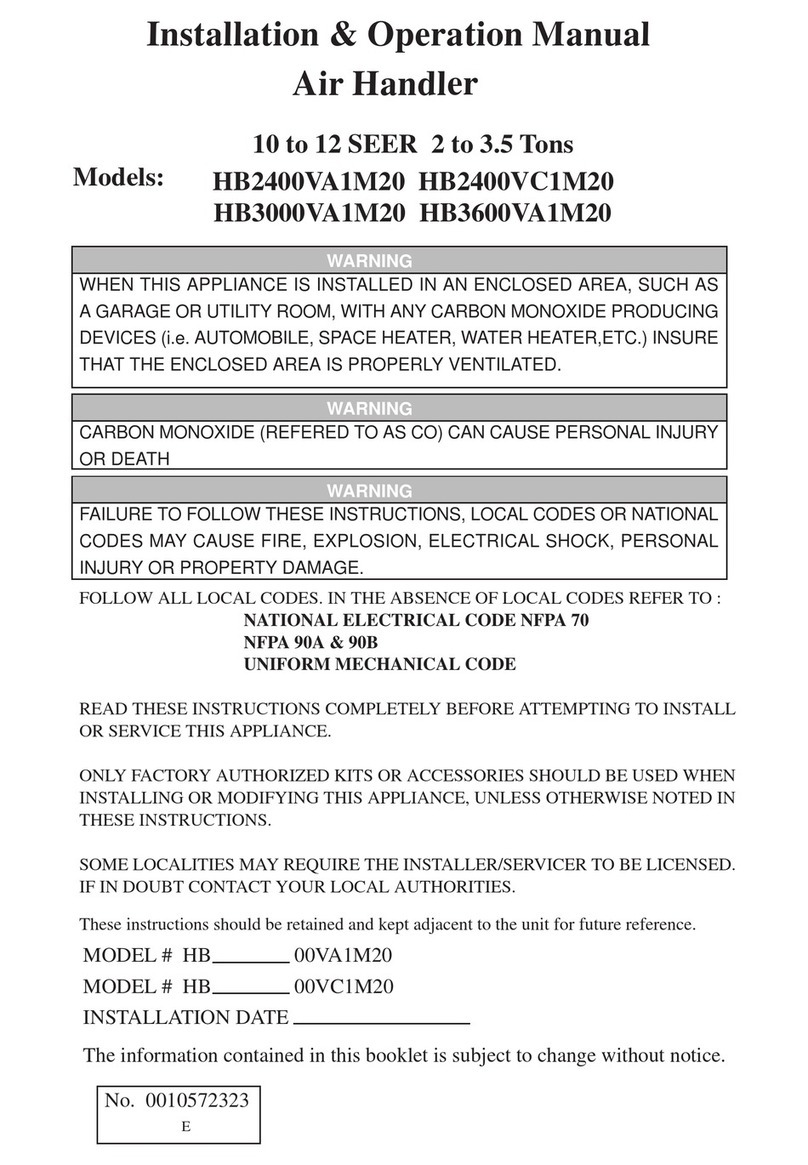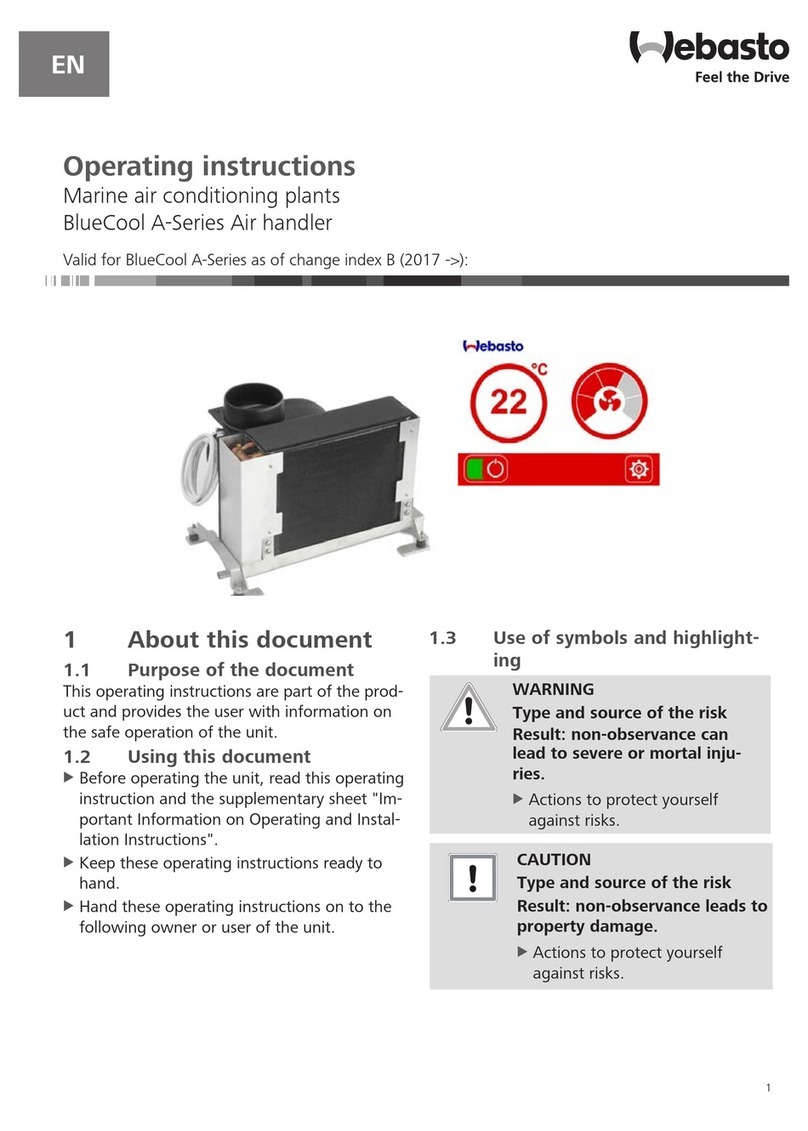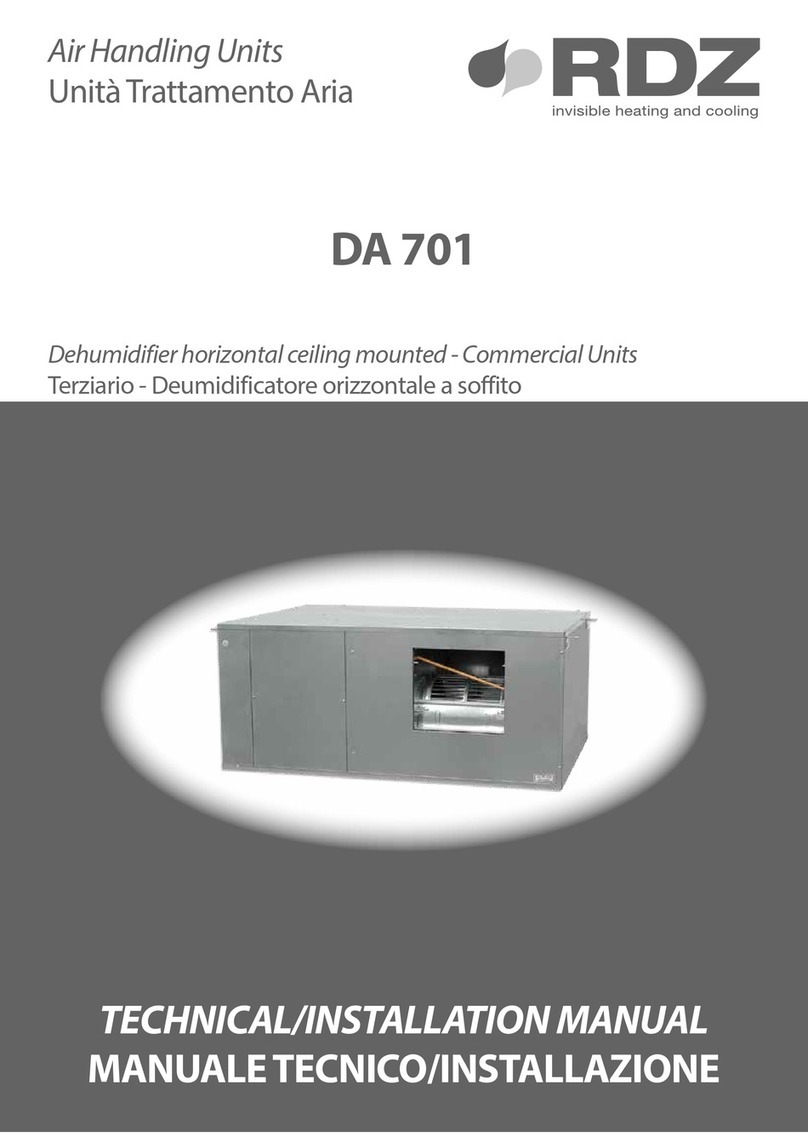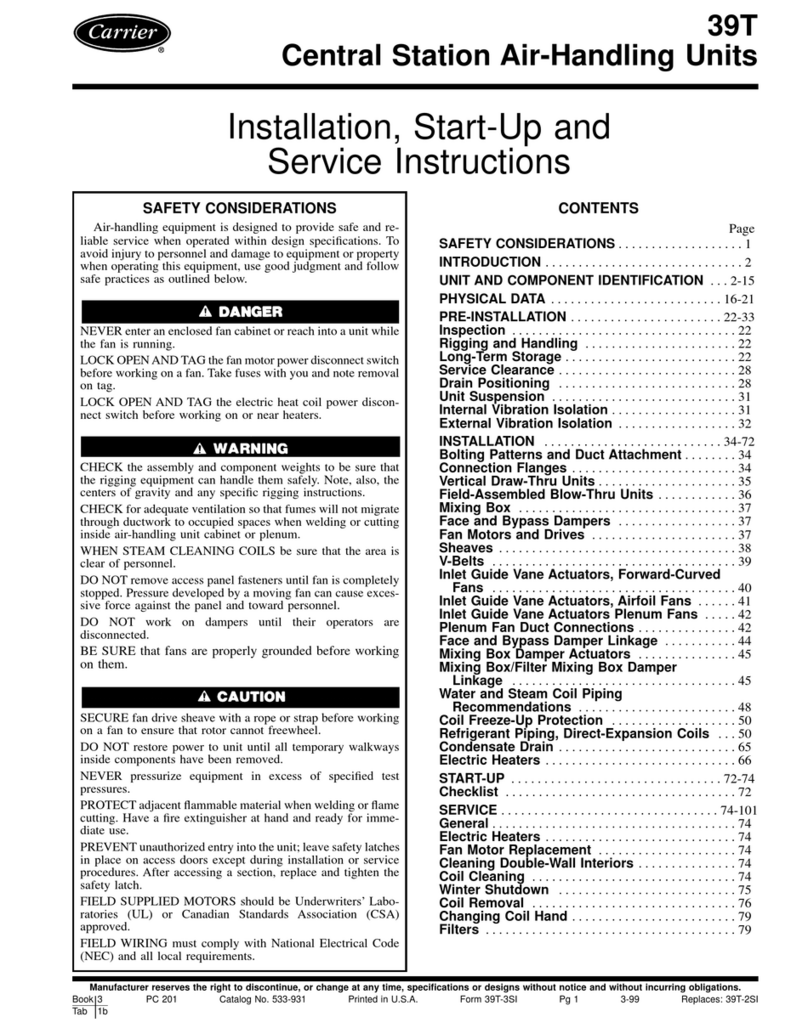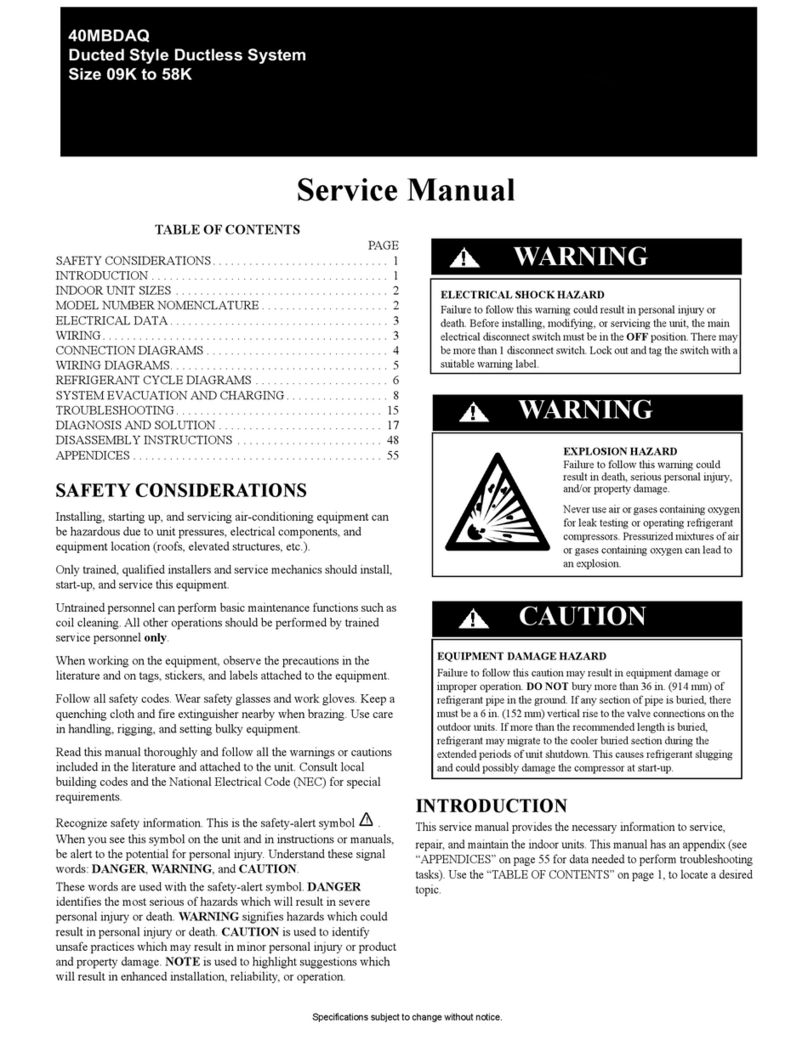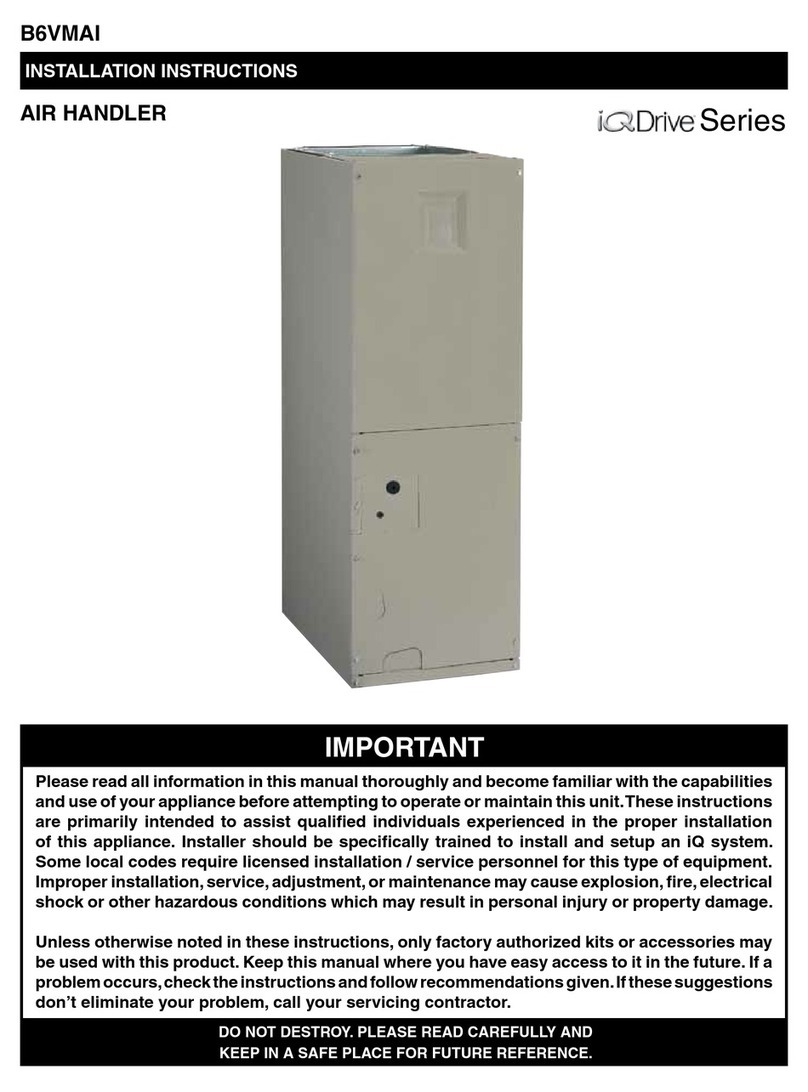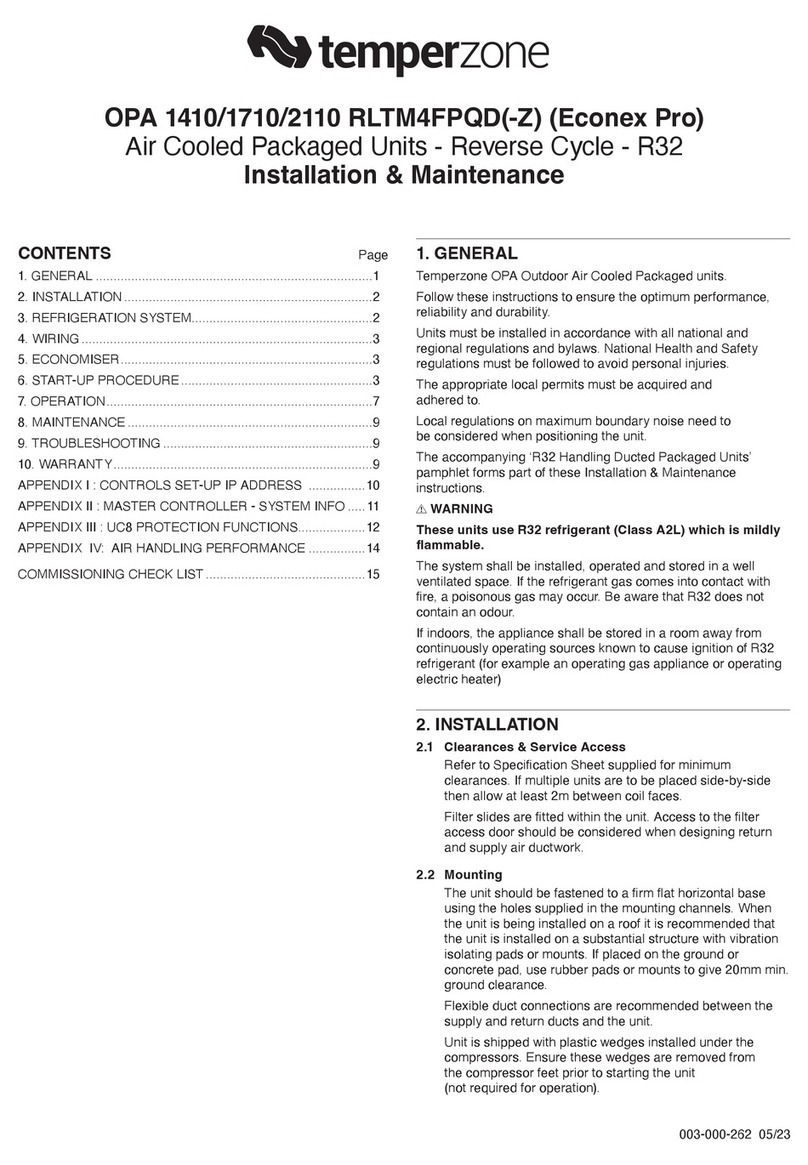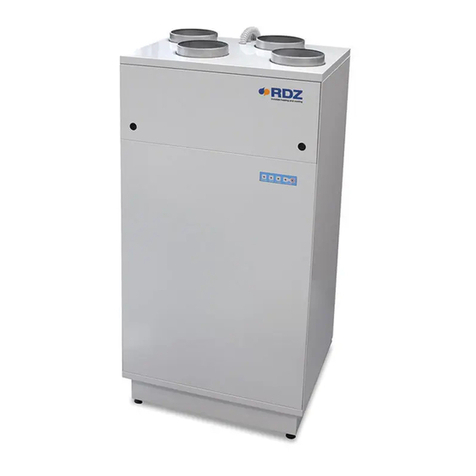
Page4
1 GENERALITY
INTRODUCTION
This manual was conceived with the aim of making installation and management of your system as simple as possible.
By reading and applying the suggestions in this manual, you will be able to obtain the best performance from the purchased product.
We would like to thank you for the choice you made by purchasing our product.
Read this booklet carefully before carrying out any operation on the unit.
The unit must not be installed or performed on it in any way unless this manual has been carefully read and understood in all its parts. In particular, all
the precautions listed in the manual must be taken.
The documentation supplied with the unit must be handed over to the system manager so that he can keep it carefully (at least 10 years) for any future
assistance, maintenance and repairs.
The installation of the unit must take into account both the purely technical requirements for correct operation and any local legislation
in force and specific provisions.
Make sure that when the unit is delivered, there are no obvious signs of transport damage. In this case, indicate it on the delivery note.
This manual reflects the state of the art at the time the machine was marketed and cannot be considered inadequate because it is subsequently
updated on the basis of new experiences. The Manufacturer reserves the right to update the production and the manuals, without the obligation to
update the previous ones, except in exceptional cases.
Contact the Manufacturer's Sales Department to receive further information or updates to the technical documentation and for any improvement
proposal to this manual. All reports received will be rigorously screened.
BASIC SAFETY RULES
We remind you that the use of products that use electricity and water implies the observance of some fundamental safety rules:
•Use of the appliance by disabled and unassisted persons is prohibited
•It is forbidden to touch the appliance with bare feet and with wet or damp parts of the body
•Any cleaning operation is prohibited before having disconnected the appliance from the mains power supply by setting the main system switch
to off
•It is forbidden to modify the safety or adjustment devices without the authorization and indications of the appliance manufacturer
•It is forbidden to pull, disconnect or twist the electric cables coming out of the appliance, even if this is disconnected from the mains power
supply.
•It is forbidden to introduce objects and substances through the air intake and delivery grilles.
•It is forbidden to open the access doors to the internal parts of the appliance without having first turned the main switch of the system to off.
•It is forbidden to disperse and leave the packaging material within the reach of children as it can be a potential source of danger.
•Respect the safety distances between the machine and other equipment or structures to guarantee sufficient access space to the unit for
maintenance and assistance operations as indicated in this booklet.
•The power supply of the unit must take place with electric cables having a section suitable for the power of the unit. The voltage and
frequency values must correspond to those indicated for the respective machines; all machines must be earthed as per current legislation in
the various countries.
•Do not release R134A into the atmosphere: R134A is a fluorinated greenhouse gas, referred to in the Kyoto protocol, with a global warming
potential (GWP)=1975.





